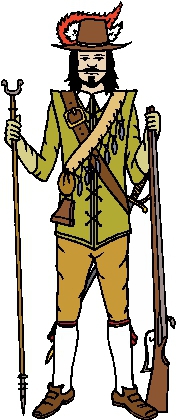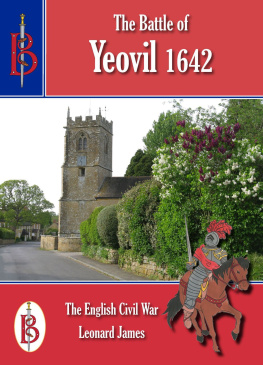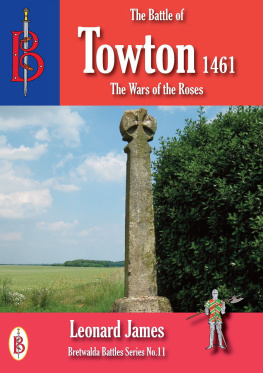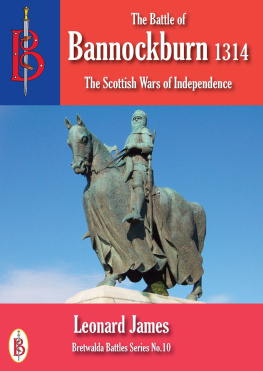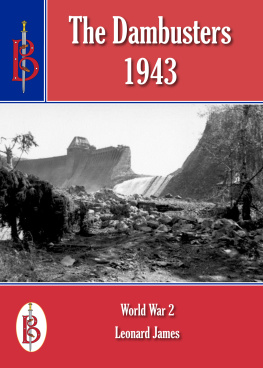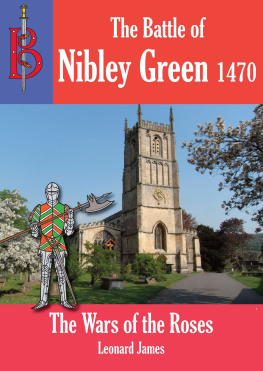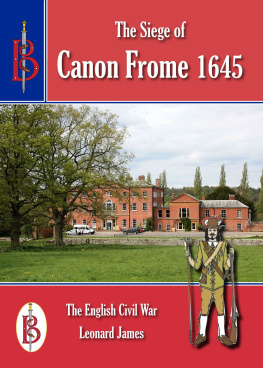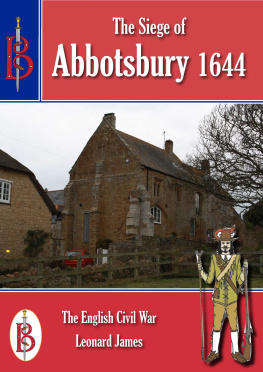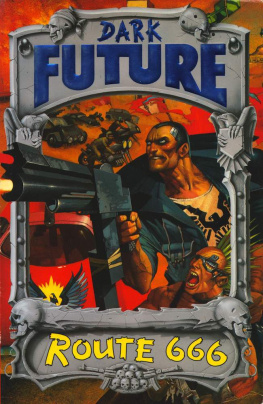Bretwalda Battles
The Battle of Yeovil 1642
The English Civil War
by Leonard James
Published by Bretwalda Books
Website : Facebook : Twitter : Blog
This ebook is licensed for your personal enjoyment only. This ebook may not be re-sold or given away to other people. If you would like to share this book with another person, please purchase an additional copy for each person. If you're reading this book and did not purchase it, or it was not purchased for your use only, then please purchase your own copy. Thank you for respecting the hard work of this author.
First Published 2014
Copyright Bretwalda Books 2014
Leonard James asserts his moral rights to be regarded as the author of this work.
Contents
Yeovil
The Somerset town of Yeovil is today a fairly big place with 40,000 inhabitants with a strong manufacturing sector and, nearby, several large military bases. It is prosperous with high levels of employment and a bustling town centre.
In part this prosperity is based on the town's communications links. The A30 east-west route runs through the town, as does the north-south A37 while the main road from London to the southwest, the A303, is just a few miles to the north. There are also two railway lines - one running east-west and the other north-south - with two railway stations.
It is those good travel links that have dominated Yeovil's history. What is now the A37 was in Roman times a road from Dorchester to Bath. There was a small Roman town here on the banks of the River Yeo, and nearby villas show the area to have been a prosperous farming region. That prosperity remained long after the Romans left. In the Domesday Book of 1086 Yeovil features as "Givele" and is described as a small town with a profitable market. By 1350 the town had gained a charter that gave it the right to elect its own local officials, rather than having them imposed by the king.
By the mid-17th century Yeovil was one of the richest and busiest towns in Somerset. Not only was it a market town and a centre for local government administration but the bridge over the River Yeo made it an important road centre, and barges coming up the river from the Bristol Channel by way of the River Parrett and Langport meant it was an inland port for the import-export business.
All this made Yeovil an important target for the armies of the English Civil War and explains why war came here in 1642.
A musketeer from the time of the Civil War. His main weapon is a matchlock musket. This gun fired a lead bullet weighing about half an ounce. Due to the loose fit of the ball in the barrel the weapon was accurate to only around 80 yards, though the ball could kill a man at anything up to 150 yards. The forked prop in his right hand is a support to take the weight of the weapon when it was fired, these supports were going out of fashion at this date as the guns became lighter. Dangling from his cross belt are a number of pre-packed cartridges containing gunpowder and musket ball. Further ammunition would be kept in a box or chest nearby to be shared out to the men as needed. Rates of fire were slow, around one shot per minute. He therefore has a sword as a secondary weapon to use in hand to hand fighting.
The English Civil War
The English Civil lasted from 1642 to 1651, falling into three distinct phases which are sometimes termed the First Civil War (1642-46), the Second Civil War (1648-49) and the Third Civil War (1650-1651). Such terminology is one of historians, for the people of the time the bloodshed seemed more like one interminable conflict that restarted when people thought it was over.
The key causes of the Civil War have been debated endlessly, with historians seeking to find social, religious or political features that explain why the apparently peaceful and settled Kingdom of England suddenly collapsed into anarchy, bloodshed and violence. While the causes were no doubt complex, they can be reduced to two basic causes: First, a dispute between King and Parliament over who should rule England; Second the foolishness of King Charles I.
For generations the balance of wealth and power in England had been shifting from the monarchy and the old landed nobility to a new rising class of gentry and merchants. Trade overseas and a growing industrial base, albeit one still very much craft based, was making the small businessman and farmer comparatively much more prosperous than such men had been a century or two earlier. With increased prosperity came better education and higher aspirations. A degree of social mobility not found in many other countries allowed the richer and more successful merchants and gentry to move up into the ranks of the nobility, meaning that the attitudes and outlooks of the growing middle classes began to be felt higher up the social structure.
This newly wealthy and ambitious middle class found its political outlet in the House of Commons in Parliament. At this date only a minority of people had a vote when it came to electing a Member of Parliament, but the local gentry did business with and mixed freely with the mass of the population in a way the king and nobles did not. They were likely to know what even the poorest of their fellow citizens thought and believed, even if they did not entirely agree themselves.
The House of Commons was, therefore, very much a middle class institution at a time when the middle class was increasingly wealthy and well educated, and in touch with the country as a whole. The powers of Parliament were, however, restricted. It had no power to make any laws at all. All it could do was debate and agree Bills, or Requests, which were then sent to the monarch for decision. It was entirely up to the monarch to agree or reject these Bills.
On the other hand, the monarch could not raise taxes. All the king could do was come up with an idea for a tax and send it to Parliament for agreement. It was entirely up to Parliament if the request for a tax should be agreed or refused. Since most taxes were levied annually or at most for a few years at a time, Parliament could use its power to agree or refuse taxes to pressure the monarch into agreeing Bills.
This interplay had been going on for centuries without much rancour or trouble. A forceful monarch such as Henry VIII would bully Parliament, a wily one like Elizabeth Iwould flatter it. Generally a way forward was found that suited everyone and disputes were rare indeed. But as the balance of wealth shifted to the middle classes, so Parliament came to have more of an upper hand than before. Compromises were reached, deference shown, deals agreed and England was governed peacefully.
And then King Charles I came to the throne.
The problem with Charles would prove to be that he had no common sense at all. For centuries the English coronation ceremony had included two elements: blessing with holy oil, giving Gods sanction, and acclamation by the congregation, bestowing the approval of the people of England. Under English custom, the king had always ruled with the consent of the people - and more than one king had been removed when that consent ended.



